Japanese Knotweed, a notorious invasive plant, has become a significant concern in the UK due to its potential to wreak havoc on properties and biodiversity. The mere sighting of this plant in your neighbour’s garden can be stressful, but it’s crucial to handle the situation efficiently and responsibly. In this comprehensive guide, we’ll explore what steps you can take if you discover Japanese Knotweed lurking next door.
1. Accurate Identification is Key
Before taking any action, ensure you’ve correctly identified the plant as Japanese Knotweed.
Its distinctive red-speckled stems, shield-shaped leaves, and clusters of small white or cream flowers in late summer are telltale signs. A dense, tall thicket-like growth pattern is also characteristic. It’s imperative to avoid unnecessary panic by being absolutely sure before approaching your neighbour.
Send us a photo of the plant in question for help identifying it https://conservationlandservices.co.uk/contact/invasive-weed-checker/
Why Japanese Knotweed in the winter is a good time to spot and treat it? https://conservationlandservices.co.uk/resources/why-japanese-knotweed-in-the-winter-is-a-good-time-to-spot-and-treat-it/
2. Foster Open Communication
Initiate a polite and calm conversation with your neighbour about Japanese Knotweed.
They might not be aware of its invasive nature or the potential issues it can cause. Open communication is essential in such situations, and a friendly discussion can go a long way in resolving the problem amicably.
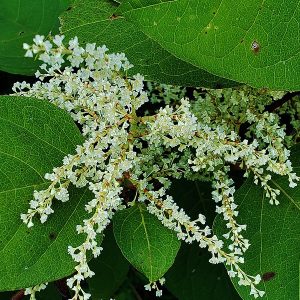
3. Share Information and Resources
Offer to share information and resources about Japanese Knotweed and its impact.
Your neighbour may be more willing to address the issue if they understand the risks associated with this invasive plant. Providing them with resources and articles that explain its impact can be enlightening.
4. Advocate Professional Help
Suggest that your neighbour consult with an invasive plant removal specialist.
These professionals can assess the situation and develop a treatment plan. Given the notorious resilience of Japanese Knotweed, relying on experts with the knowledge and resources to handle the problem is often the most effective approach.
It is not advisable to try to remove Japanese Knotweed yourself
Many types of knotweed can easily be mistaken by the untrained eye and has the potential to spread when it’s dug up Check if you have an invasive weed for free5. Enlighten on Legal Implications
Emphasise the legal implications of Japanese Knotweed.
Across the UK, it’s considered controlled waste, and allowing it to spread into the wild is illegal. Share this information with your neighbour, highlighting the potential for civil litigation if the plant infiltrates adjoining properties. Stress the importance of addressing the issue promptly.
Japanese Knotweed Legislation
The Anti-social Behaviour, Crime and Policing Act 2014
In 2014, a modification was incorporated into the Anti-social Behaviour, Crime and Policing Act, stipulating that individuals who intentionally allowed the spread of knotweed onto adjacent properties or failed to manage it on their own could face penalties. Possible consequences include receiving a fixed penalty notice, resulting in a £100 fine, or undergoing prosecution. If found guilty, an individual may incur a level 4 fine, amounting to £2,500. Organisations, including companies, could be subject to fines not surpassing £20,000.
Wildlife and Countryside Act 1981
Section 14(2) of the Wildlife & Countryside Act 1981 specifies that “If an individual plants or facilitates the growth of any plant listed in part 2 of schedule 9 in the wild, they shall be deemed to commit an offence.” Japanese knotweed is explicitly mentioned in this schedule and falls under the purview of this legislation. Anyone found guilty under section 14 of this act may face a fine of £5000 and/or a 6-month prison sentence, or, upon indictment, up to 2 years of imprisonment and/or an unlimited fine.
6. Monitor Your Own Property
Keep a vigilant eye on your property to prevent encroachment.
If the neighbouring Japanese Knotweed extends onto your land, follow the same steps outlined above and seek professional help if necessary. It’s crucial to note that if the plant is within 3m of your boundary, you must declare it to a buyer when selling your home.
7. Patience and Understanding are Key
Dealing with Japanese Knotweed can be a lengthy process; be patient and understanding.
Support your neighbour as they work to manage or eliminate the problem. Offering assistance and understanding throughout the process can contribute to a positive relationship.
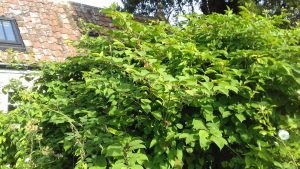
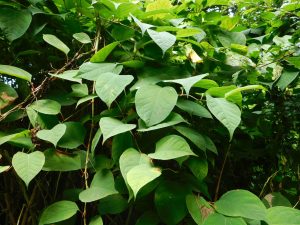
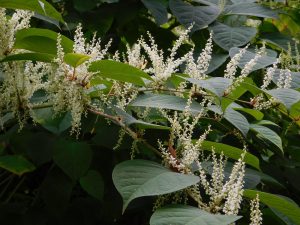
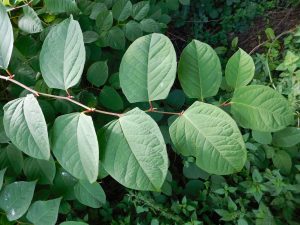
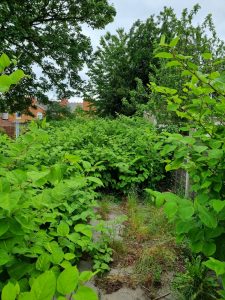
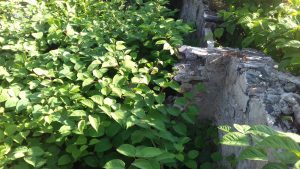
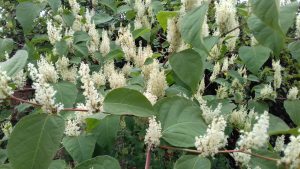
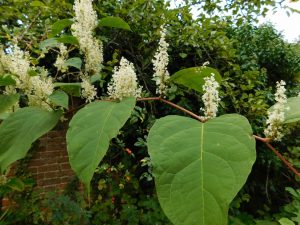

8. Document the Issue
Document the presence of Japanese Knotweed with photographs and descriptions.
This documentation may prove useful for legal purposes or insurance claims if the plant causes damage to your property. A thorough record ensures you’re well-prepared for any future complications.
9. Seek Legal Advice as a Last Resort
If all else fails, and the threat is significant, consider seeking legal advice.
In some cases, legal action may be necessary to protect your interests and property value. While it’s a last resort, it’s crucial to explore every option when dealing with a persistent and potentially damaging invasive species.
In conclusion, discovering Japanese Knotweed in your neighbour’s garden may be disconcerting, but addressing the situation responsibly and amicably is crucial. Open communication, education, and professional guidance are the keys to resolving the issue while maintaining a positive relationship with your neighbour. By taking these proactive steps, you can help prevent the further spread of Japanese Knotweed and minimise its overall impact.









